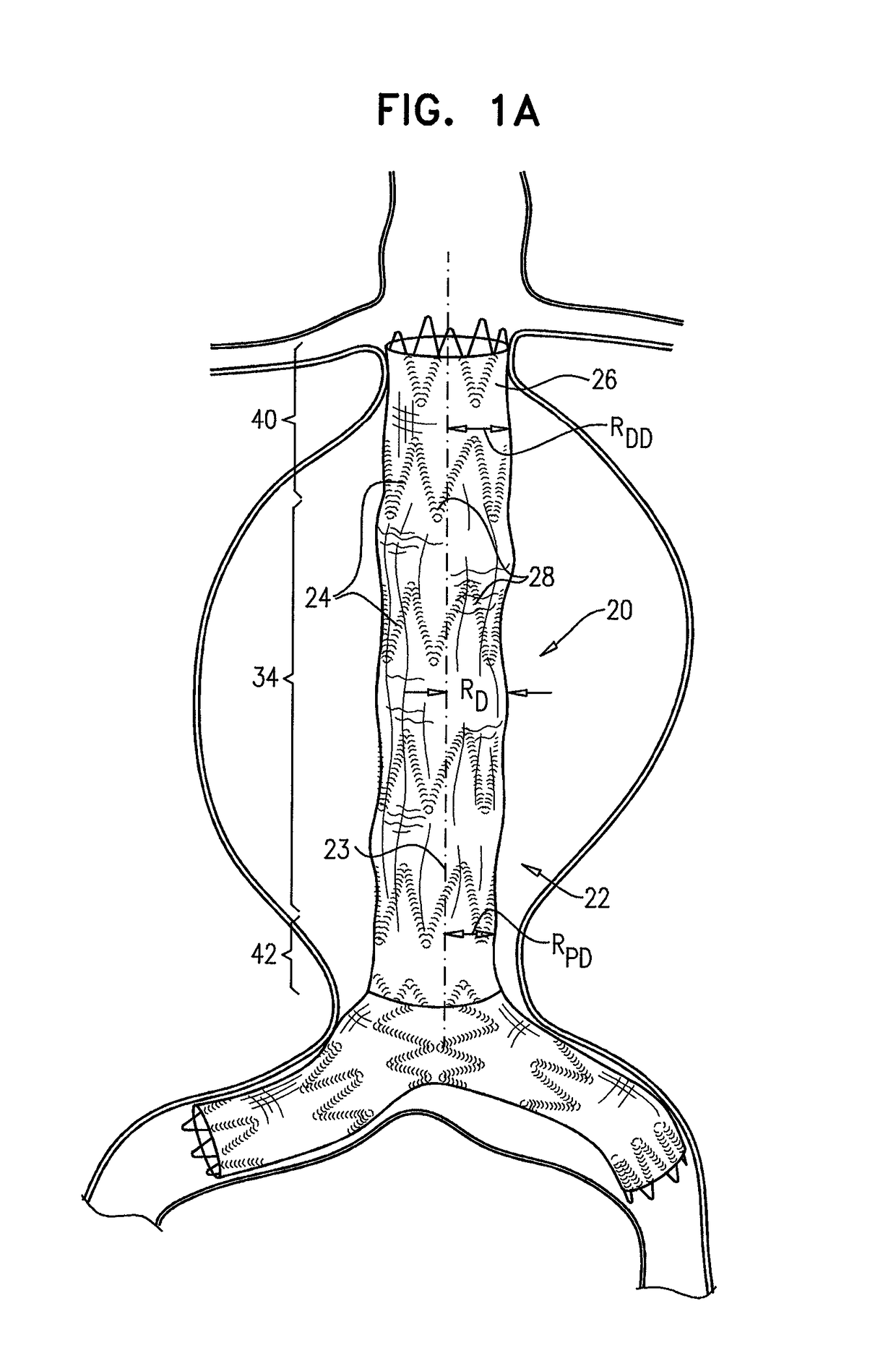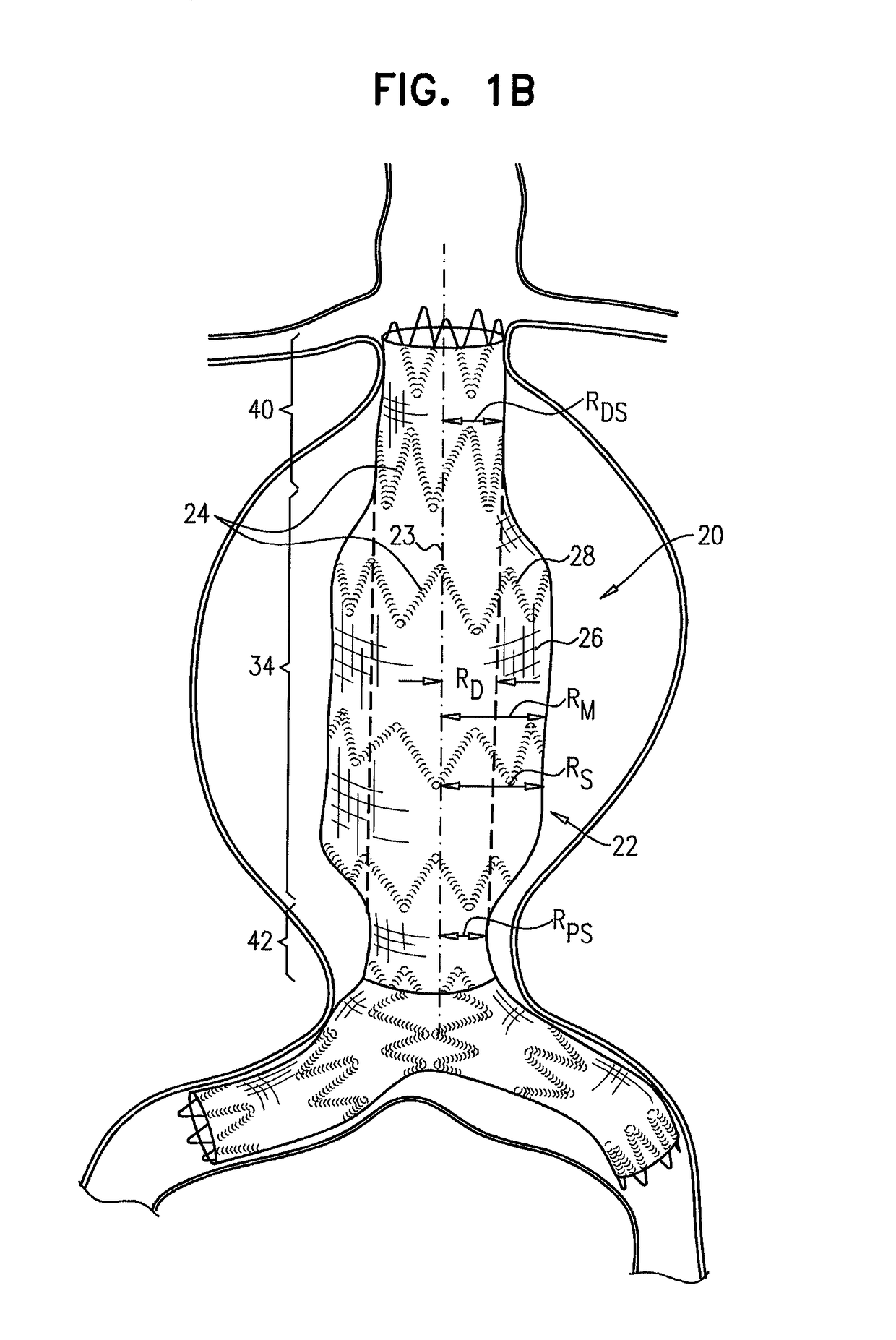Stent-grafts with post-deployment variable radial displacement
a radial displacement and stent technology, applied in the field of tubular prostheses, can solve the problems of reducing increasing the load of the heart, and reducing the effectiveness, so as to reduce the overall vascular compliance and minimize the effect of the stent-graft. , the effect of high physiological complian
- Summary
- Abstract
- Description
- Claims
- Application Information
AI Technical Summary
Benefits of technology
Problems solved by technology
Method used
Image
Examples
Embodiment Construction
[0130]FIGS. 1A and 1B are schematic illustrations of an endovascular stent-graft 20, in accordance with an application of the present invention. Stent-graft 20 comprises a generally tubular body 22 having a central longitudinal axis 23. Body 22 is configured to assume (a) a radially-compressed delivery state, typically when the body is initially positioned in a delivery catheter, and (b) a radially-expanded deployment state, upon deployment from the delivery catheter. Both FIGS. 1A and 1B show the stent-graft with body 22 in its radially-expanded deployment state. Body 22 is shown during diastole of an adult human in FIG. 1A, and during systole of the adult human in FIG. 1B.
[0131]Body 22 comprises a flexible stent member 24, and a tubular fluid flow guide 26. The fluid flow guide is attached to the stent member, such as by suturing or stitching. The flexible stent member may be attached to an internal and / or an external surface of the fluid flow guide. Optionally, a portion of the s...
PUM
 Login to View More
Login to View More Abstract
Description
Claims
Application Information
 Login to View More
Login to View More - R&D
- Intellectual Property
- Life Sciences
- Materials
- Tech Scout
- Unparalleled Data Quality
- Higher Quality Content
- 60% Fewer Hallucinations
Browse by: Latest US Patents, China's latest patents, Technical Efficacy Thesaurus, Application Domain, Technology Topic, Popular Technical Reports.
© 2025 PatSnap. All rights reserved.Legal|Privacy policy|Modern Slavery Act Transparency Statement|Sitemap|About US| Contact US: help@patsnap.com



